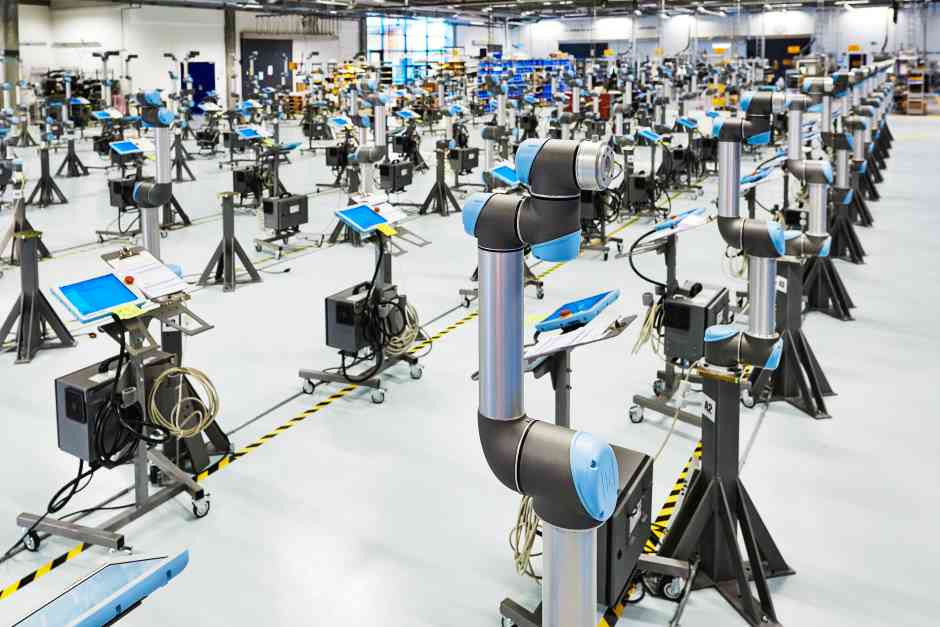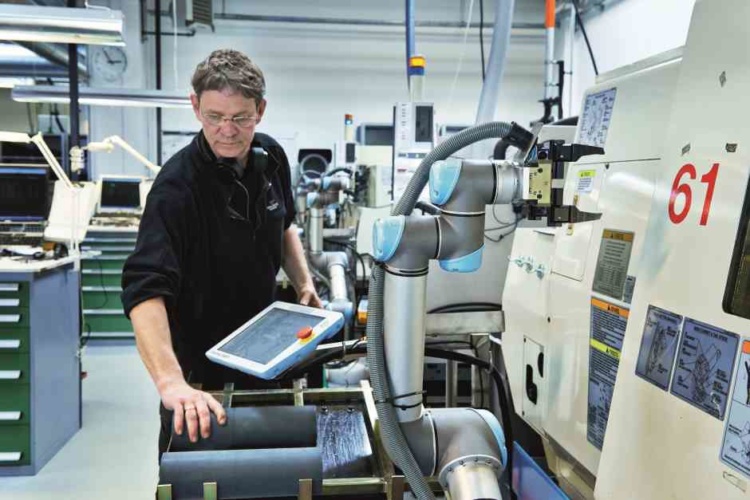Whilst some lockdown measures are easing, contact tracing remains our best method for improving our understanding of the virus and slowing its spread. The UK government has pledged to reach an ambitious target of 250k per day, whilst the global search for a vaccine continues. However, reaching such high targets has proven difficult and a rapid scaling up of production is needed to keep momentum going.
Whilst the government has opened several testing superlabs to help cope with increased testing capacity, testing facilities continue to be beset by labour shortages and changing government advice on safety regulations. In such an ever-changing and dynamic environment, automation is the key to increasing capacity, and allowing for increased testing targets, whilst also taking the pressure off medical staff and ensuring their safety. By allowing collaborative robots (cobots) to work in unison with human employees, productivity can increase dramatically, and allow the workforce to grow by as much as 22%.

Automating excellence
Productivity in manufacturing remains a prominent issue for UK organisations, impacted by Brexit and slow uptake of technological solutions. When it comes to automation, the UK lags behind the rest of Europe, with just 85 units per 10,000 employees, versus the European average of 105. This places the UK at 22nd worldwide. Many factors have contributed to low automation in the UK, ranging from the ease of accessing cheap labour and a lack of funding in robotic solutions. However, as Brexit stands to stem the flow of labour, and Covid-19 necessitates social distancing, cheap labour is no longer a viable option for productivity. Cobots can be deployed quickly and flexibly into any production line, delivering immediate results. They can be reprogrammed to accommodate changing manufacturing needs and demand, as well as repaying investment with increased production as soon as they are implemented.
MORE ON COBOTS
Technical Q&A: Trends and developments in cobotics
Within a testing facility, cobots could be quickly deployed for physically intensive and repetitive tasks, such as moving testing samples in and out of a diagnostics machine, or packing testing samples. Cobots can carry out these tasks 24/7, without a need for a break.
Whilst cobots can help out with dull and repetitive tasks, they are not a replacement for human workers. Lab workers are crucial to testing operations and meeting testing targets. The analytical skills of a lab worker can’t be matched by a robot and are needed in functions such as strategic decision-making.
In fact, by deploying cobots, organisations are actually able to increase their workforce. When Danish company, Trelleborg Sealing Solutions implemented cobots into its workforce, not only was the business able to increase its number of orders but actually hire an additional 50 members of staff. At a time when budgets are being cut and jobs are a little less secure, it’s important to bear in mind that cobots take tasks, not jobs.

Automation is also vital in ensuring employee safety. Cobots are cleanroom certified and can reduce the strain on workers placed at the frontline in high-risk environments. Cobots working alongside human workers allow high levels of productivity whilst maintaining effective social distancing in testing facilities. Minimising the number of people handling each sample greatly reduces the risk of contamination and spreading the disease further.
The next Covid challenge
The global race for a Covid 19 vaccine is still underway and automation has a key role in ensuring that a safe vaccine is ready on time. Whilst the focus is on the development process, the next challenge is fast production on a huge scale, and the ability to distribute it swiftly across the globe.
By introducing cobots to the production process early on, we can remove the dependence on human workers and ensure their safety, whilst working at maximum productivity levels.










Water Sector Talent Exodus Could Cripple The Sector
Maybe if things are essential for the running of a country and we want to pay a fair price we should be running these utilities on a not for profit...